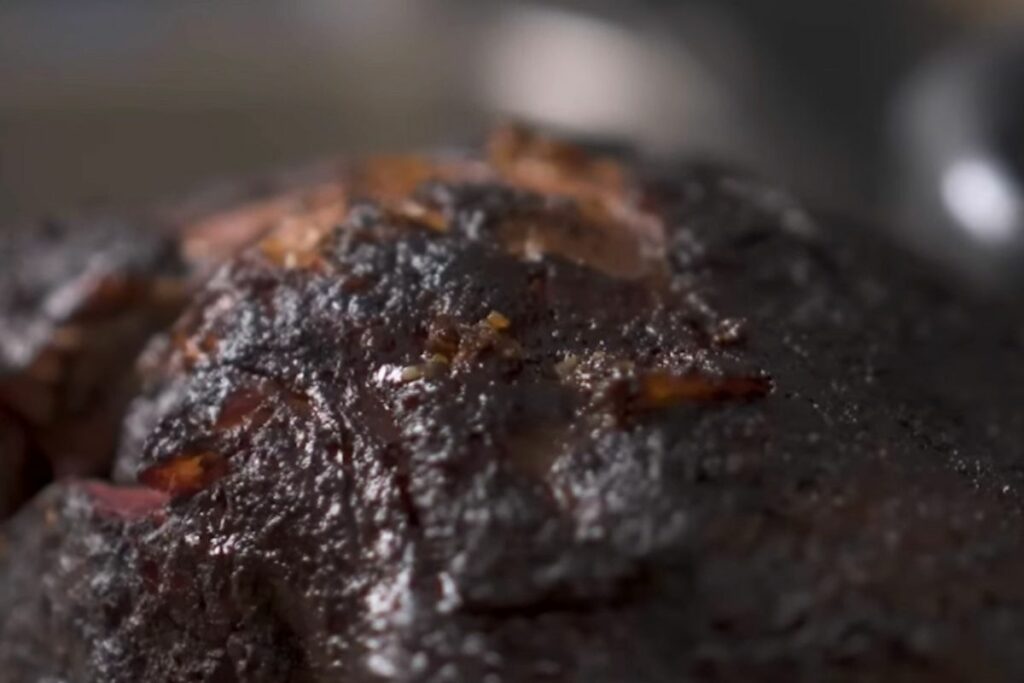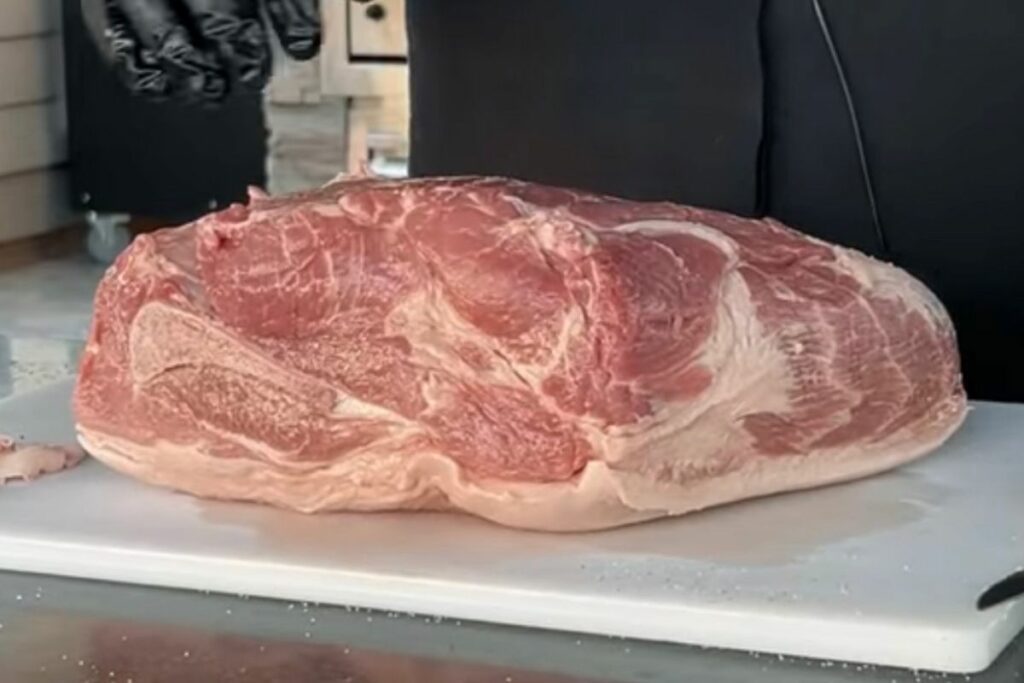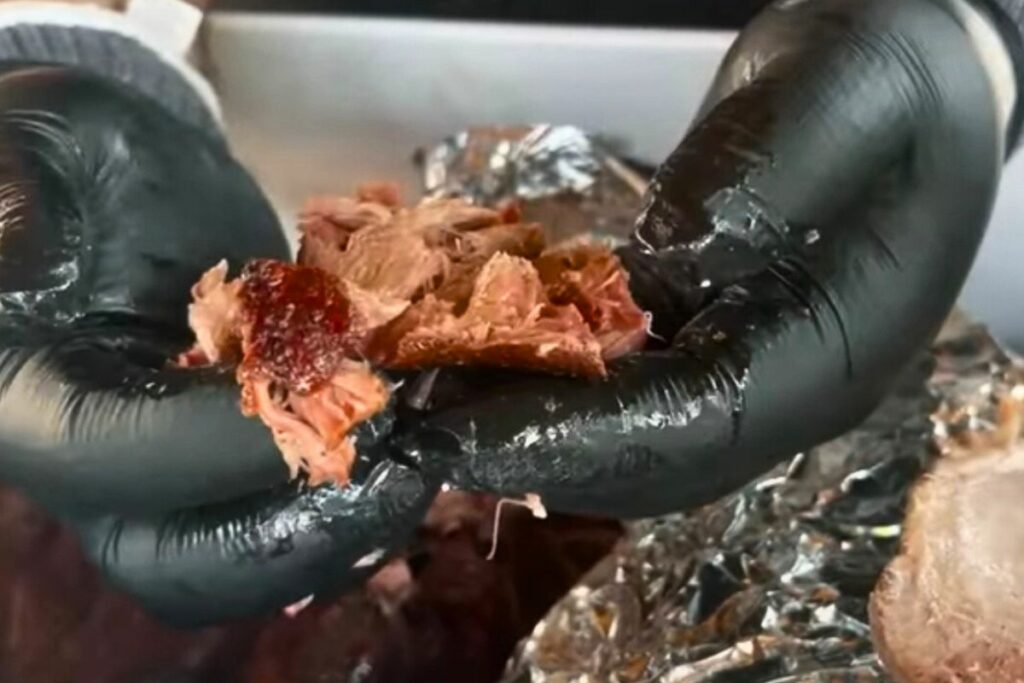If you consider yourself to be a BBQ enthusiast, then you are in the right place. For anyone who BBQs frequently, it is important to find the perfect internal temperature for different types of meat to achieve the best flavors possible. This internal temperature is perhaps most important in pork butts and pork shoulders.
If you cook pork over low heat for a long time, the meat can become wonderfully tender. So tender, in fact, that you should simply shred it with your fork. Salivating yet? We are!
Of course, if you’re a seasoned maestro when using a BBQ, you will already know this. But, did you know that the internal temperature of your pork is critical in achieving the best out of the meat? Well, the process of this perfect internal temperature is fascinating and something we will be discussing in today’s blog.
Read on to discover the internal temperature you should be striving for with your pulled pork and the cooking process behind making perfect pulled pork.

What Cut To Use For Pulled Pork
For pulled pork, pork butts and pork shoulder tend to be the best cuts of meat. However, you can easily make pulled pork from a boneless pork leg or a center-cut pork loin roast as well. Most importantly, the cut of meat should have lots of connective tissue.
Without the right internal temperature during the smoking process, you will not achieve the perfect pulled pork you desire no matter the cut of meat.
Also known as the picnic shoulder, the pork butt or shoulder will give you the best pulled pork results. The shoulder of pork sports a triangular shape and is situated by the leg bone and leg muscles. Therefore, there is a great deal of connective tissue in this region.
Once the pork has been cooked slowly and under low temperatures, the connective tissues break down and transform into juicy gelatin. Ever noticed that unique rich flavor that is synonymous with pork shoulder? This is because of the connective tissue breaking down. Try and find this in leaner pork and you will be disappointed.
Pork butt is another superb choice due to its high-fat content. This cut of meat is soft and tender rather than being dry and hard to chew on. Like pork shoulder, pork butt should be cooked on low heat for a long period of time. This is the best way to guarantee juicy and tender pieces of pulled pork. Only then is it perfect for pies, sandwiches, or simply eating on its own.
Pork shoulder and butt can also be made into pork crackle. This is because they are typically sold with the skin still intact which becomes crispy and delicious when prepared correctly.
You can also slice pork shoulder and pork butt into pork slices or bake them for pork roasts. These cuts of meat are exceptionally versatile and often used in Asian cuisine, particularly Chinese-style cooking for dishes such as Siu Yuk and Char Siu.
Perfect Pulled Pork Internal Temperature
Once you have the right cuts of meat for pulled pork, you need to start the cooking process. Most importantly, your pork needs to reach an ideal internal temperature so it becomes as juicy and tender as possible.
You should not take your pork out of the smoker until it has reached a temperature of at least 180 degrees Fahrenheit. If you want those perfect shreds of pork, you should be aiming for 195 degrees Fahrenheit.
To ensure you reach the right temperature, we suggest purchasing a meat thermometer. This will give you the most accurate readings and help you cook all kinds of meat to perfection from now on.

In general, you should wait until the internal temperature reaches 195 degrees Fahrenheit. This is when the connective tissue tends to break down and becomes that delicious juicy gelatin.
On occasions, your pork’s temperature may stall. This usually happens around the 146 degrees Fahrenheit mark. If this occurs, you may have to wrap your pork butt or shoulder. Then, the optimal temperatures you should be looking to reach are between 200 and 205 degrees Fahrenheit.
If you do not have a meat temperature at hand, you can try the “poke test.” Simply poke the meat a little with a fork. If it feels soft and tender, it should start to fall apart. If so, this is an indication that your pulled pork is on the right track and ready to go.
So, we recommend aiming for an internal temperature of 195 degrees Fahrenheit but if you strive for 200 to 205 degrees Fahrenheit, the meat will usually become even softer. Therefore, it will be even easier to pull apart.
Be patient! We recommend giving your pork extra time to cook. However, make sure you remove it from your grill before it starts to overcook.
How To Make Pulled Pork
It is vital that you cook pork butt or pork shoulder correctly. If not, the meat can become tough and unpleasantly chewy.
If your cut of meat is very tough to begin with, it doesn’t mean it can’t become soft enough for sumptuous shredded pieces of pulled pork. The magic behind the cooking process is slow cooking. This is when you set your grill’s temperature to 20 degrees Fahrenheit or below.
Cuts of meat, such as pork butt, are notoriously tough but contain large amounts of collagen. Therefore, when this meat is cooked using low and slow applications, this collagen within the pork will begin to break down and transform into gelatin. This helps give the meat that rich texture and flavor which is not possible with leaner cuts of any meat.
Let’s take a look at what happens during the cooking process of pulled pork.
When the meat reaches approximately 105 degrees Fahrenheit, various enzymes will begin a denaturing process. When it reaches 120 degrees Fahrenheit, the meat will start to become opaque. This is around the same point as red meat begins turning pink such as a rare steak.

Once the temperatures reach 140 degrees Fahrenheit, the meat’s color changes once again. This time, it transforms from a pinkish hue to a grayish brown. Once the meat cooks at higher temperatures than 140 degrees Fahrenheit, it will start to release more juice and begin to shrink down.
Simultaneously, the pork will become chewy and tougher. If you have ever eaten a well-done or medium steak, then you have probably noticed that they are less juicy than medium-rare or rare steaks.
Pork is only safe to eat once it has reached an internal temperature of 145 degrees Fahrenheit. However, you shouldn’t just stop cooking pork at this temperature. For the juiciest, most tender strips of pork, you will need to keep cooking pork until it reaches 180 degrees Fahrenheit or above.
It’s not until the meat reaches 160 degrees Fahrenheit that collagen starts to convert into gelatin. Around this point, the collagen will begin to melt more quickly as it reaches its sweet spot.
This will continue until it reaches around 180 degrees Fahrenheit. From here on, the muscle fibers start to loosen. Therefore, even if the meat is dry, the gelatin will have more time to spread out and help the texture become softer and more tender.
Cooking Pork Butt To 195 Degrees Fahrenheit
Before you cook your pork, you need to prepare it correctly. Start by trimming off excess fat and then season it with your favorite barbecue rub. We recommend letting your pork sit in the refrigerator overnight at this point or allowing it to rest at room temperature for around half an hour.
Once you’re ready to start cooking the meat, you need to preheat your grill or smoker. For a gas grill, set it to medium-low or you can build a low charcoal fire. If you’re using a pellet grill, set this to 225 degrees Fahrenheit.
We find that pellet grills are best for making pulled pork. This is because wooden pellets tend to pass on a delicious smoky flavor to the meat. If you do not have a pellet grill, you can throw some wood chips on a charcoal fire or a gas grill using a foil pouch method.
Next, place the cut of pork on your grill rack with its fat side facing up. If you have a meat temperature, you should place it into the thickest portion of the pork butt. However, make sure the tip of the thermometer doesn’t touch any bone as this will give you an inaccurate reading.
Once the meat is on your grill rack, close the grill’s lid and leave the pork to cook for around 2 hours per pound.

After the meat reaches its 160 degrees Fahrenheit mark, the temperature will cease rising for several hours. In cooking circles, this is referred to as “the stall.” While this is frustrating, it’s a normal part of the cooking process. If and when you experience “the stall”, you can either wait several hours or use the “Texas Crutch” method.
The Texas Crutch method speeds up the cooking process. All you need to do is remove the pork butt from your grill as soon as it reaches 160 degrees Fahrenheit. Then, you just need to wrap the meat very tightly in a layer of aluminum foil. Return the wrapped-up meat to the grill and allow it to cook until it reaches the temperature you desire.
Bear in mind that the foil that encompasses the meat can cause the bark on the exterior of the meat’s skin to soften. This is why many pitmasters refuse to use the Texas Crutch method and prefer to just play the waiting game.
If you want crispy bark, just wait for “the stall” to finish. You could remove the foil for around 20 to 30 minutes as the cooking time comes to an end. This may revitalize the meat but it is not a sure thing. We recommend waiting things out for the best, most assured pulled pork results.
Once your pork butt has been cooked, remove it from your grill. If it is not already wrapped in foil, now is the time to wrap it up. Then, allow the pork to rest for at least 30 minutes to 2 hours. Only then will it be ready for shredding.
In Summary
For the best pulled pork, you should aim for an internal temperature of 195 degrees Fahrenheit. However, we still recommend waiting for a little longer until the meat thermometer reads 202 degrees Fahrenheit for the most perfect, tenderized pieces of pork.
If you give your cut of pork a little longer to cook, it will be so much easier to shred and the meat will retain more moisture and have a wonderfully rich texture for all to enjoy.
- Is Blue Steak Safe To Eat? - May 7, 2022
- How To Tell If Your Bratwurst Sausage Is Cooked - May 7, 2022
- The Internal Temperature For Tri Tip When Done - May 7, 2022








